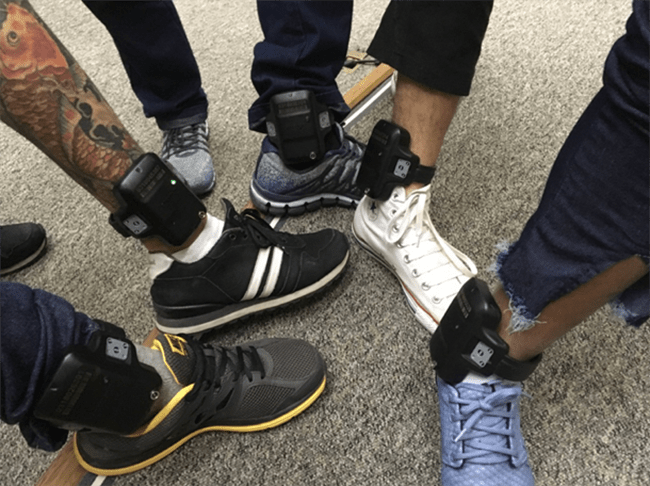Electronic monitoring is incarceration by another name.
May 21, 2019

You are likely familiar with the adage: you do the crime, you do the time. What is taken for granted in that adage is the idea that once you complete your time, you will be free. But this is currently not the case for thousands of people leaving the Illinois Department of Corrections (IDOC).
In Illinois, where the Shriver Center on Poverty Law is based, people who have served their full prison sentence are being released and immediately placed on electronic monitoring home detention by the Prisoner Review Board (PRB). Being placed on electronic monitoring home detention forces returning citizens to stay inside of their homes except for a few hours a week when they are given permission to leave.
Put plainly, electronic monitoring serves as another form of incarceration.
Nasir Blackwell was placed on a monitor after serving 24 years in prison in Illinois. He shared with the Shriver Center that as soon as he returned home after prison his parole officer told him, “you’re still incarcerated, you’re still locked up. Just because you’re home doesn’t mean you’re free.’” For people who are on electronic monitors, those words are a cruel reality.
Unfortunately, the use of electronic monitoring for people who have been released from prison is common practice in states around the country. However, many of those states have parole, a system that allows people to leave prison before completing their full prison sentence. But that is not the case in Illinois, where parole has been abolished since 1978. Today, almost every person placed on an electronic monitor by the Illinois PRB has already served their complete prison sentence and paid their proverbial debt to society.
Placing returning citizens on electronic monitors is not only personally stigmatizing and a continuation of their punishment, it also stands in the way of their reentry into society.
While Nasir was incarcerated, he took classes, earned degrees and certifications, and even formed a veterans organization in the prison. But even after all of his accomplishments, Nasir’s continued growth and successful reentry as a returning citizen was delayed because he was placed on a monitor. While on electronic monitoring Nasir was only allowed to leave his house 4 days a week for 6 hours a day. During those brief hours of “freedom,” Nasir was expected to look for a job, check in with his parole agent, go to medical appointments, grocery shop and live.
Prior to being released from prison, every person meets with the PRB to learn their conditions of release. The purpose of these conditions, according to the state of Illinois, are to assist returning citizens in serving a law-abiding life. But, as illustrated by Nasir’s experience, electronic monitoring does the exact opposite. The practice actually impedes returning citizens’ ability to reconnect with family and rebuild relationships, look for employment, and shed the stigmatization and some of the trauma caused from being in prison.
Looking for a job while wearing an electronic monitor is extremely difficult. Nasir didn’t begin to look for a job until he was off the monitor because he didn’t want a potential employer involved. It is the practice of parole agents to verify appointments and meetings that returning citizens need to attend, “they go to your employers and let the employer know that you’re on electronic monitoring, so they can call your employer and ensure that you’re there,” said Nasir.
Not only is electronic home detention harmful for returning citizens, it is also an expensive program with little-to-no evidence of increasing public safety or reducing recidivism. IDOC spends roughly $6.5 million dollars each year on the electronic monitoring home detention program. Yet the Sentencing Policy Advisory Council recently reported that, “electronic monitoring has a minimal effect on reducing recidivism…” and the Illinois Budgeting for Results Commission produced a cost-benefit analysis of the program in 2018 and rated the program as “marginal” — which is just one step above “ineffective”.
Electronic monitoring is incarceration by another name that extends the carceral state to our communities and into our homes. It does not serve returning citizens, a majority of whom are Black, and instead has proven to be a poor use of Illinois taxpayer dollars. The millions currently devoted to the practice could be better spent on programs that ensure successful reentry for returning citizens, such as improving access to safe, affordable and quality housing.
People who have served their time should be truly free and able to reintegrate into society. The Shriver Center and the Illinois Coalition Challenging E-carceration are working to end the unnecessary use of electronic monitoring in Illinois and give returning citizens a fair chance to be successful.
You can help us restore freedom to returning citizens by supporting this bill that would require Illinois agencies to annually report how they use electronic monitoring and sharing this blog to spread awareness about how electronic monitoring is used in Illinois.